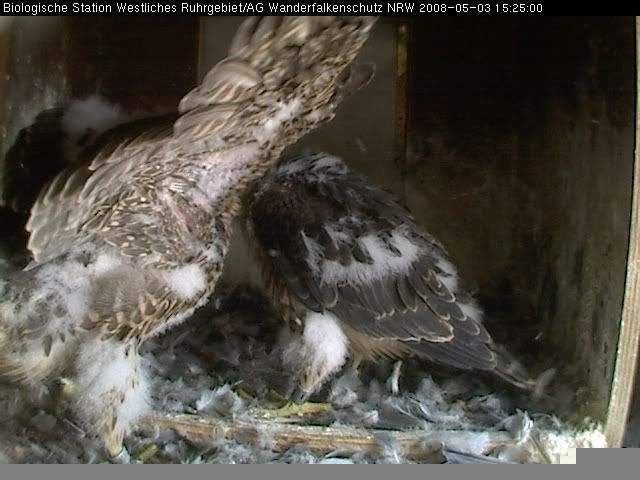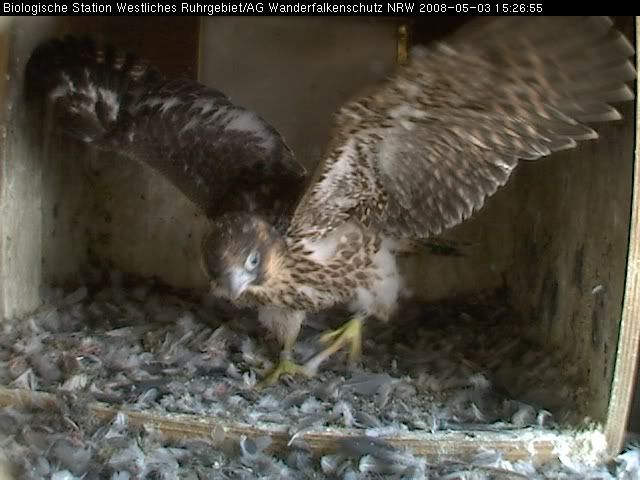

The 3 Oberhausen juvi-chicklets are 35 days old now. They are changing rapidly now into juveniles. They do a lot of wingflapping to excersise the flight muscles. The anatomy of the peregrine falcon, the fastest creature on our blue planet is completely focused on his dive-bombing prey catching behaviour.
There are two main flight muscles attaching to each wing. The pectoralis muscle powers the downstroke and is proportionately very large in peregrine falcons (up to 35% of body weight). The supracoracoideus is much smaller and has a tendon which curves around to attach to the top of the humerus. The supracoracoideus can provide power to the upstroke if required but more usually produces a rapid rotation of the humerus at the top of the upstrok. In addition there are 48 other muscles within the wing and around the shoulder which produce the wide range of movements of the wing and its feathers.
The large flightmuscles can only get strong when really flying, that is the real excersis of course. But in order to fly they do have to have some muscle building to do. That is why juvi's spent a lot of time flapping.
So they have enough strength to get back up, when down. For most of the time the first flight is a free fall down. And they have seldom the power to get up to the nest again. But there are exceptions. Hope of DE Mortel 2007 flew like he never did anything else. Blue Foot of the Hamilton nestsite 2007 likewise as did Rhea Mae of the Rochester 2006 scrape. So these 3 German wanderfalken , keep on flapping and get strong to fledge.










No comments:
Post a Comment